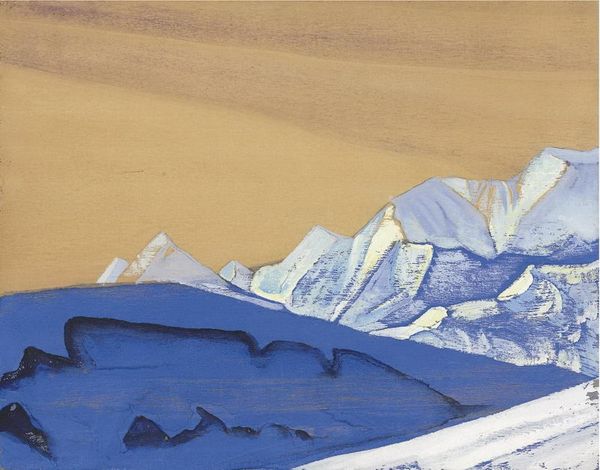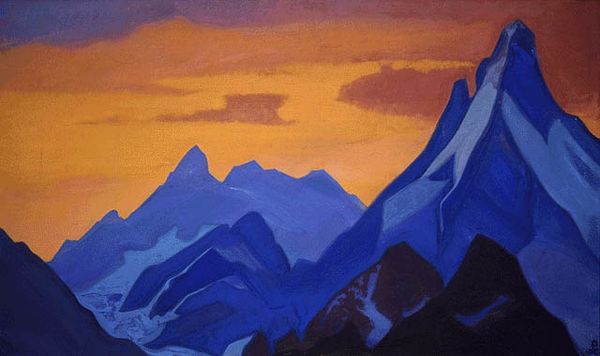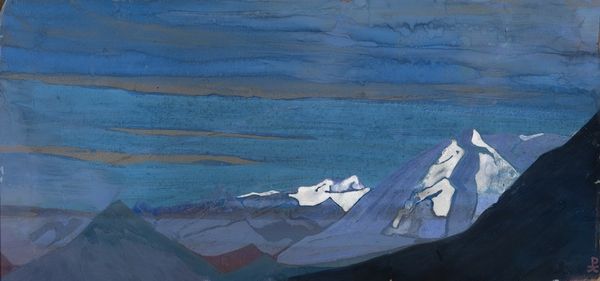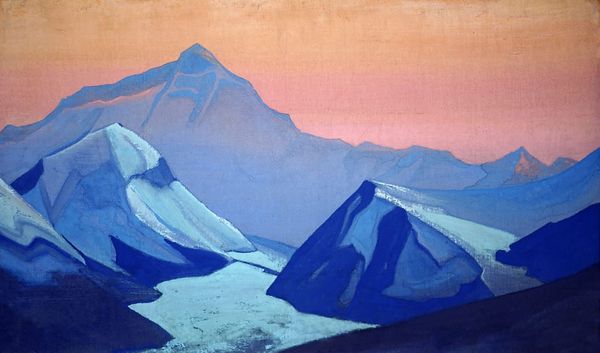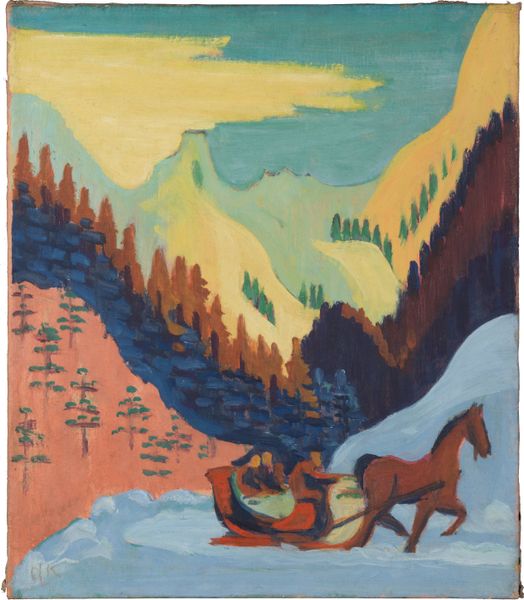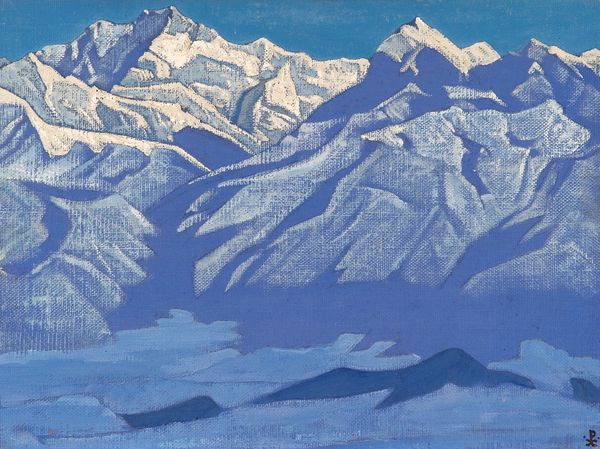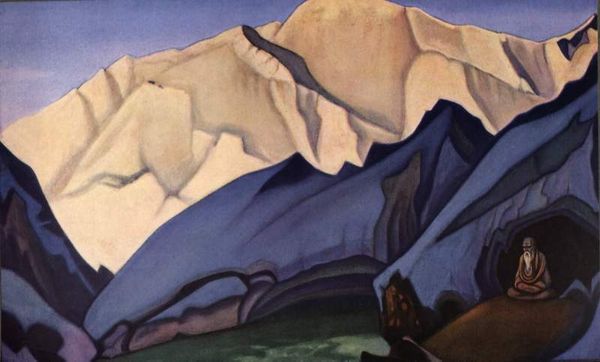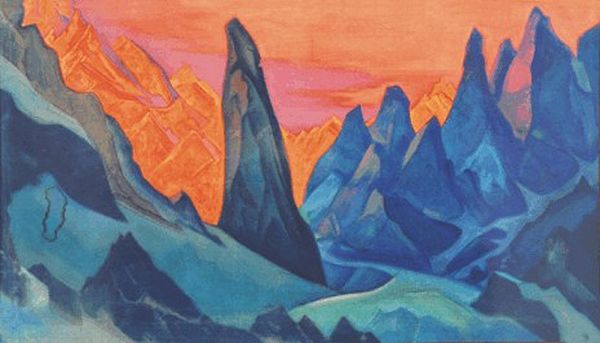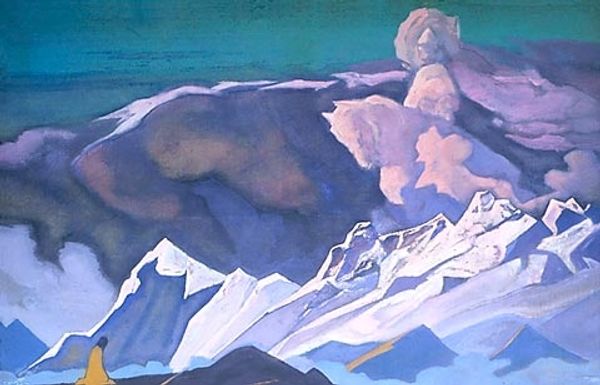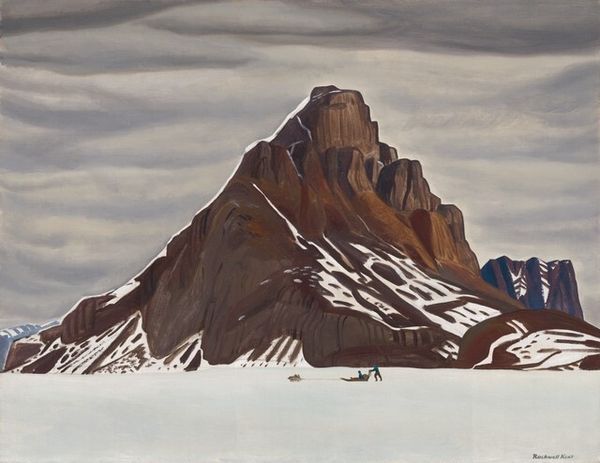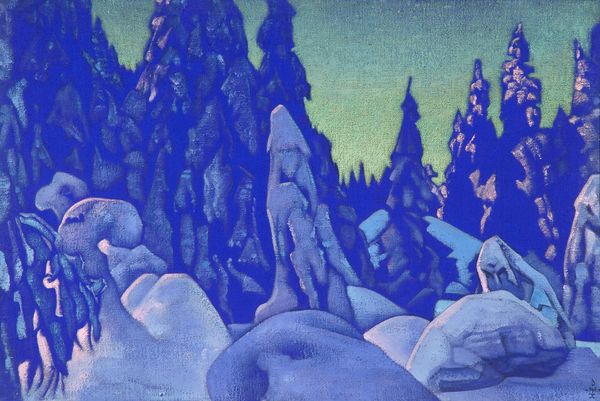
painting, oil-paint
#
narrative-art
#
painting
#
oil-paint
#
war
#
landscape
#
winter
#
oil painting
#
soldier
#
group-portraits
#
mountain
Dimensions: 46 x 80 cm
Copyright: Public domain
Curator: Let's discuss "Partisans," an oil painting from 1942 by Nicholas Roerich. Editor: Initially, I'm struck by the chill—the dominant blues and whites certainly convey a sense of profound cold, perhaps even a visual metaphor for the bleakness of war. Curator: Yes, the formal use of a limited, cool palette creates that impression. The composition relies heavily on diagonals and verticals, a stark, almost architectural rendering of the mountainous landscape. Notice the arrangement of the figures; how does their placement impact your reading? Editor: I think the hunched postures and the fact they’re in the shadow of those towering, indifferent mountains amplifies the painting's theme of war, suggesting the vulnerability of those resisting oppressive forces during WWII. It raises questions about resilience against seemingly insurmountable odds. Who were the real life partisans depicted here and what conditions were they fighting for? Curator: Certainly. It’s worthwhile noting Roerich's technique, especially his use of tempera-like thin layers of oil paint which creates that distinctive matte surface. It denies a certain kind of painterly lushness and grandeur—which would almost certainly disrupt this reading of wartime austerity and precarity. Editor: Exactly! The subdued color palette emphasizes the harsh environmental conditions of the war itself, which suggests something about resource access, the environmental costs of war, as well as class and racial stratifications. It forces us to consider how warfare disproportionately burdens the most vulnerable in a society. How do these visual strategies amplify his historical message? Curator: The painting utilizes a simplification of form. The soldiers, while rendered representationally, verge on abstraction. It's as if they are becoming one with the landscape itself. Consider Roerich's interest in the spiritual qualities of landscape. This is a symbolic, almost mystical representation of resolve. Editor: I agree. Considering the historical context of WWII, with the rise of nationalistic and militaristic forces, this depiction can be understood as both an allegorical statement on human endurance as well as a commentary on that particular moment in time. The blending of bodies into the landscape reminds me of that powerful claim of defending ones' territories, almost becoming one with them to fight. Curator: This reading prompts further consideration of the formal relationships here, doesn't it? Thank you for that interpretation! Editor: Indeed! Thanks for drawing attention to the painterly subtleties and art historical techniques used!
Comments
No comments
Be the first to comment and join the conversation on the ultimate creative platform.
